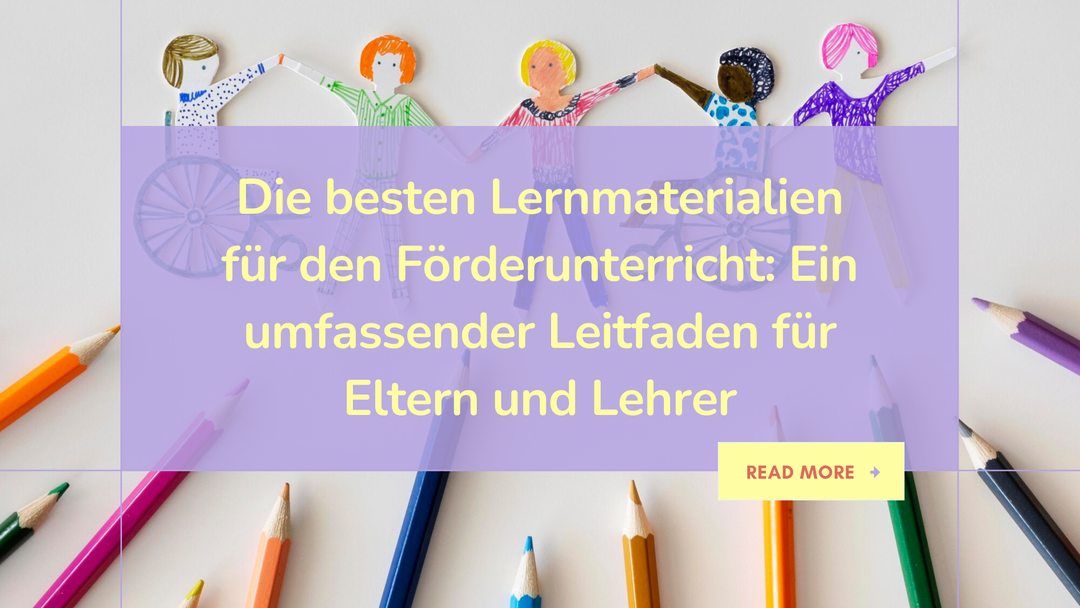Dyscalculia - Don't be afraid of 1x1
Dyscalculia is similar to dyslexia. The abnormalities in processing language and numbers are viewed as a learning disorder. Certain areas of the brain perceive and interpret signals differently than in other people without a learning disorder.
Therefore, people with dyscalculia find it difficult to perform even simple arithmetic operations. Since numbers are a constant companion in our everyday life, many situations can be perceived as stressful, as one can quickly come across as uneducated.
Dyscalculia is diagnosed in approx. 3-8% of people and affects both boys and girls with roughly the same frequency, although research in this field is still ongoing and the science is not yet completely certain.

Dyscalculia in school
The 1x1 is a standard exercise in school and is always perceived as one of the most striking experiences in school. It can be all the more dramatic for the child if the experience is negative.
Not becoming the champion in corner guessing is different from failing in the simplest math problems, even if you were just very nervous or simply too slow at the time. At some point, the mishaps can develop into small trauma that will burn into them for a lifetime.
In therapeutic sessions, therefore, work is usually done on the emotional and mental stability of the child in individual situations. The WHO therefore also classifies dyscalculia as a mental illness. The good thing is that this deficit can be compensated for.
Often times, children with dyscalculia feel that the numbers are meaningless, or that they don't understand the tasks, or that they don't recognize common patterns such as simple series of numbers. To give an example, it can be, for example, that a child cannot immediately assign the dice on a dice to a number and has to count it first.
Therefore, schoolwork is usually exhausting and even if the weaknesses in numbers are not very pronounced, what all children have in common is that they take longer for the tasks than usual.
Since numbers do not memorize themselves so strongly and everything has to be explained from the beginning over and over again, arithmetic is usually felt to be tedious.
By the way, there is no uniform methodology to better teach children with dyscalculia, for example, arithmetic problems. Some people associate stories with numbers or think in spaces and other children have a good grasp of word problems or geometry.

What specifically can be done to help children with dyscalculia who do not have natural access to numbers?
It is important to make a diagnosis at an early stage and to differentiate between the individual types of dyscalculia, as these differ from child to child.
If this has been achieved, it is advisable for the children to playfully take away their fear of numbers by consciously asking for prices while shopping, for example.
In mathematics, you can also arouse curiosity wonderfully with toys and only illustrate abstract concepts wonderfully, for example when cutting the cake, which clarifies set theory.
These illustrative examples in mathematics have a very long tradition.
Did you know that the abacus has been shown to have been used to solve arithmetic operations since 2300 BC?
In general, it is important to train children who suffer from dyscalculia in their attention and concentration, as there is often a lack of focus or interest in the tasks. The point is simply to develop a tried and tested strategy to get through everyday life well and to find out which points of contact I have with numbers and to cope with these challenges.
Once you have reached this level of self-efficacy, you suddenly find it no longer so bad not to become a corner champion.
We at Natureich specifically offer educational toys to work preventively with your children on mathematical understanding.
Take a look at our 1x1 arithmetic toy to train your child's number skills at an early age.
Click now here for more information about the 1x1 toy!








Leave a comment